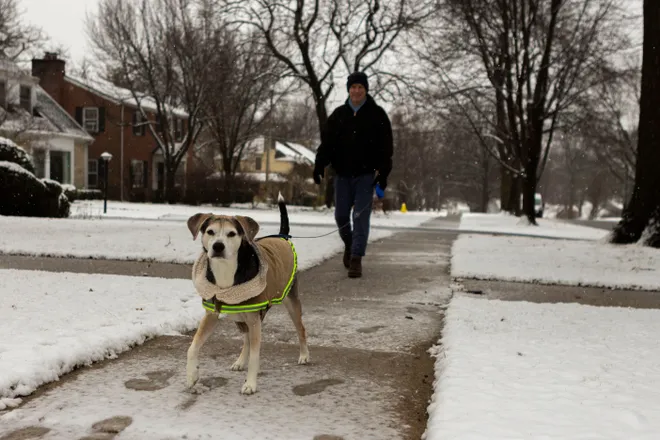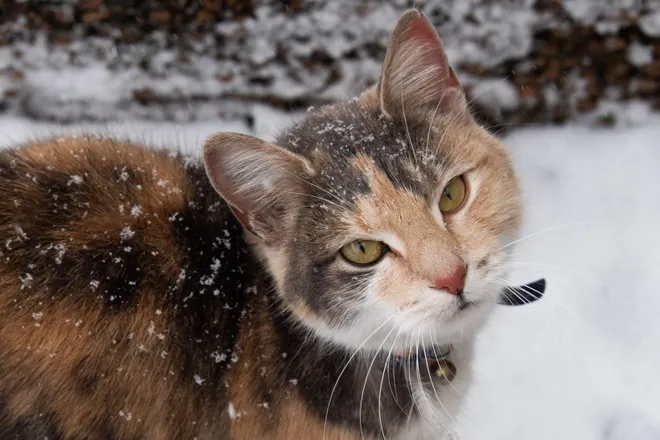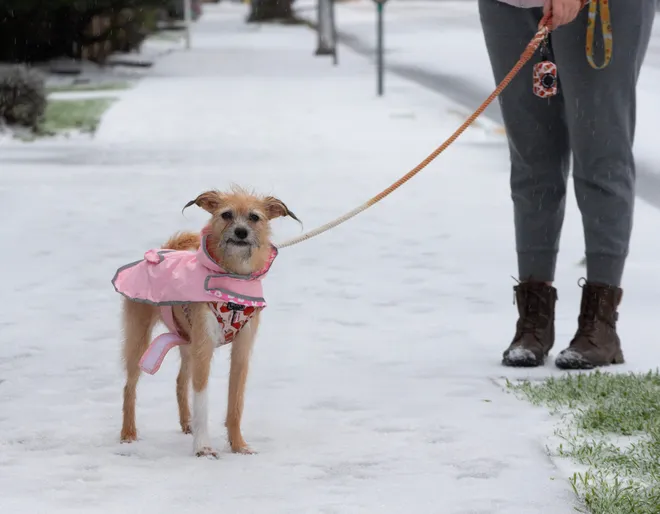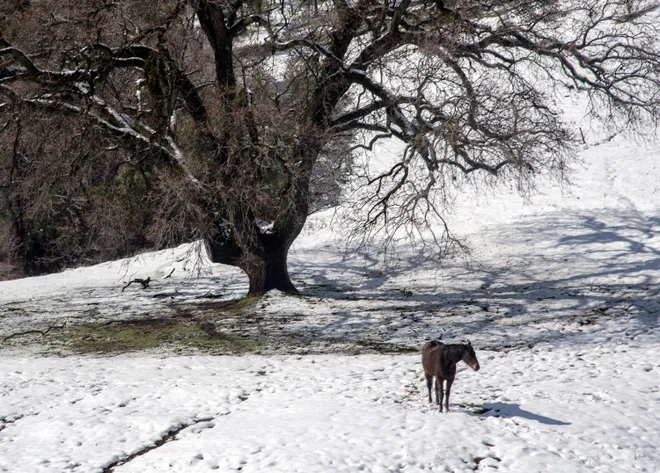Extreme cold is dangerous for your pets. Here's what you need to do to keep them safe.

Below-freezing temperatures can be just as dangerous for pets as they are for their human companions.
Fur babies left to their own devices in extremely cold environments are more “susceptible to injury and death,” according to American Humane, a Washington, D.C.-based nonprofit focused on animal safety.
"This is one of those things that comes down to using your common sense," Thomas Edling, chief veterinary officer and animal ethicist at American Humane, told USA TODAY on Tuesday.
"Most of our pets are our companions so they’re in and out with us all the time. Most of them live inside with us. And so, they’re not acclimated to be outside – at all,” Edling said. “If we’re cold, they’re cold. Just because they have fur doesn’t mean that they can withstand the cold longer than we can. They’re gonna be just as cold as we are."
With more than 40 million Americans under hard freeze warnings this week, now is a good time to make sure you're doing everything you can to keep your pets safe.
Here are some tips.
How cold is too cold for my pet?

A good rule of thumb: If its too cold for you to be outside, it's probably too cold for your pet to be outside, according to the American Society for the Prevention of Cruelty to Animals.
Like humans, pets can be susceptible to weather-associated health risks like frostbite and hypothermia. Your pet’s coat, body fat stores, activity level and overall health are some factors that you can use to help determine how long, if your pet should be outside at all, according to the American Veterinary Medical Association.
The best way to protect your pet, after taking their tolerance into account, is to limit their exposure to the cold. That includes walks.
Here are some things to keep in mind:
- "Arthritic and elderly pets may have more difficulty walking on snow and ice and may be more prone to slipping and falling," the American Veterinary Medical Association says.
- Long-haired or thick-coated dogs can adapt better to the cold than other pets, but are still at risk. Keep a close eye on them as you assess their tolerance levels.
- "Short-haired pets feel the cold faster because they have less protection, and short-legged pets may become cold faster because their bellies and bodies are more likely to come into contact with snow-covered ground," the American Veterinary Medical Association says.
- Pets with diabetes, heart disease, kidney disease or hormonal imbalances can have a harder time regulating their body temperature and may be more susceptible to problems from temperature extremes, the American Veterinary Medical Association says.
Only a veterinarian can conclusively determine what your pet’s temperature limits are.
Cold weather:41 million Americans under hard freeze warnings Tuesday
What else can I do to keep my pet safe?

There are several ways to keep your pet safe from cold weather, including feeding your pet well, keeping your pets inside and checking your pet’s paws for signs of cold-weather injury or damage.
Most of the suggestions recommended by the American Veterinary Medical Association are easy to incorporate in your day-to-day routine. The most important tip is to avoid leaving pets outside for long periods in below-freezing weather.
Here are a few others:
- Consider getting your pet a sweater, dog coat or booties. Especially, if your pet has a short coat or seems bothered by the cold
- Your pet should be immediately brought back in from the cold if they are whining or shivering, seem anxious, slow down or stop moving, seem weak, or are looking for warm places to burrow
- Wipe down/wash your pet’s feet, legs and belly after walks to reduce the risk of your pet being poisoned from exposure to de-icing products, antifreeze or other chemicals that could be toxic
- Have enough food, water and medicine on hand for your pet to get through at least five days in case of severe weather
What can I do to keep my livestock safe in cold weather?

Dogs and cats aren’t the only kinds of animals that needed to be protected from the potentially damaging effects of cold weather.
Animals traditionally kept outdoors like horses, cows and pigs have “their own unique considerations and needs when the weather gets colder,” according to the American Veterinary Medical Association.
Here are some recommendations from the association on how to keep your livestock safe:
- Recognize the importance of early veterinary care
- Provide appropriate shelter from the elements
- Consider the amount and quality of feed
- Ensure access to fresh and unfrozen water

Disclaimer: The copyright of this article belongs to the original author. Reposting this article is solely for the purpose of information dissemination and does not constitute any investment advice. If there is any infringement, please contact us immediately. We will make corrections or deletions as necessary. Thank you.







